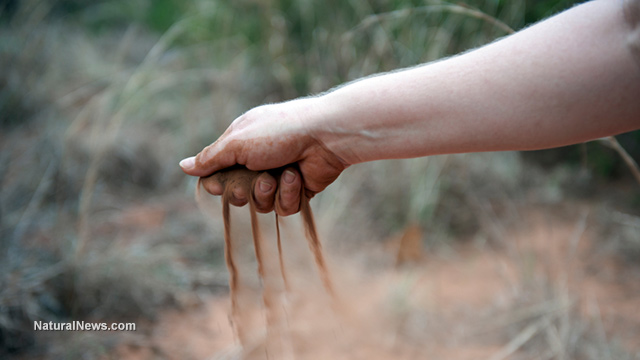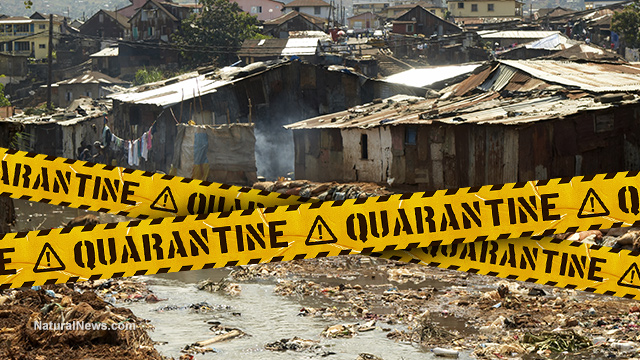If you’re new to preparedness, you may be reading some of the excellent and informative websites out there and feeling quite quite overwhelmed. While many sites recommend a one year supply of food, manual tools, and a bug out lodge in the forest, it’s vital to realize that is a long-term goal, not a starting point.
A great starting point for someone who is just getting started on a preparedness journey is prepping specifically for a two-week power outage. If you can comfortably survive for two weeks without electricity, you will be in a far better position than most of the people in North America.
Even if you aren’t convinced that hardcore preparedness is for you, it would still be difficult to argue against the possibility of a disaster lasting for a couple of weeks. Major natural disasters like Hurricane Sandy down to lesser storms like last year’s derecho in the Metro DC area are incontestable – storms happen and all you can do is be ready to weather them. As well, a large western US power company recently announced that they did not foresee
the ability to keep up with electrical demand this summer, and may institute rolling blackouts to cope with it. If you are prepared for two weeks without power, you are prepared for a wide range of short-term emergencies, including quarantines, interruptions of income, or civil unrest.
To prepare for a two week emergency, think about what you would need if the power went out and you couldn’t leave your home for 14 days. Once you begin creating your plan, you may be surprised and discover that you already have most of what you need to batten down the hatches for a couple of weeks. It’s just a matter of organizing it so you can see what you need.
Use the following information to create your personal 2 week preparedness plan. Modify the suggestions to adapt them to your particular home, family, and climate.
Water
Everyone knows that clean drinking water is something you can’t live without. In the event of a disaster, the water may not run from the taps, and if it does, it might not be safe to drink, depending on the situation. If there is a boil order in place, remember that if the power is out, boiling your water may not be as easy as turning on your stove.
Each family should store a two week supply of water. The rule of thumb for drinking water is 1 gallon per day, per person. Don’t forget to stock water for your pets, also.
You can create your water supply very inexpensively. Many people use clean 2 liter soda pop bottles to store tap water. Others purchase the large 5 gallon jugs of filtered water from the grocery store and use them with a
top-loading water dispenser
. Consider a
gravity fed water filtration device and
water purification tablets
as well.
Food and a way to prepare it
There are two schools of thought regarding food during a power outage. One: you need a cooking method that does not require the grid to be functioning. Two: you can store food that doesn’t require cooking.
If you opt for a secondary cooking method, be sure that you have enough fuel for two weeks. Store foods that do not require long cooking times – for example, dried beans would use a great deal of fuel, but canned beans could be warmed up, or even eaten cold.
Learn more about building your pantry
HERE.
Click
HERE for a short term food storage list
Click
HERE to find a list of meals that require no cooking.
Heat (depending on your climate)
If your power outage takes place in the winter and you live in a colder climate, heat is another necessity. During the first 24 hours after a power outage, you can stay fairly warm if you block off one room of the house for everyone to group together in. Keep the door closed and keep a towel or blanket folded along the bottom of the door to conserve warmth. You can safely burn a couple of candles also, and in the enclosed space, your body heat will keep it relatively warm. As well, dress in layers and keep everything covered – wear a hat, gloves (fingerless ones allow you to still function), and a scarf.
Click
HERE to learn how to stay warm with less heat.
However, after about 48 hours, that’s not going to be enough in very cold weather. You will require back-up heat at this point in certain climates. If you are lucky enough to have a source of heat like a fireplace or woodstove, you’ll be just fine as long as you have a supply of wood.
Consider a
portable propane heater
(and propane) or an oil heater. You have to be very careful what type of backup heat you plan on using, as many of them can cause carbon monoxide poisoning if used in a poorly ventilated area. Also invest in a
CO2 alarm that is not grid-dependent
.
Learn more about off-grid heat options
HERE.
Sanitation needs
A common cause of illness, and even death, during a down-grid situation is lack of sanitation. We’ve discussed the importance of clean drinking water, but you won’t want to use your drinking water to keep things clean or to flush the toilet.
For cleaning, reduce your need to wash things. Stock up on paper plates, paper towels, and disposable cups and flatware. Keep some disinfecting cleaning wipes and sprays (I don’t recommend using antibacterial products on a regular basis, however in the event of an emergency they can help to keep you healthy.) Use hand sanitizer after using the bathroom and before handing food or beverages – there may be a lot more germs afoot in a disaster.
Look at your options for sanitation. Does your toilet still flush when the electricity is out? Many people discovered the hard way that the toilets didn’t work when the sewage backed up in the highrises in New York City in the aftermath of Hurricane Sandy. At our cabin, the toilet won’t flush without power because the pump is electric.
If you are on a septic system, with no risk of the toilet backing up into the house, simply store some water for flushing in the bathroom. (At the first sign of a storm, we always fill the bathtub for this purpose.) Add the water to the tank so that you can flush.
If this is not an option, another solution is to stock up on extremely heavy duty garbage bags (like the kind that contractors use at construction sites) and kitty litter. Place a bag either in your drained toilet or in a bucket. Sprinkle some kitty litter in the bottom of the bag. Each time someone uses the bathroom, add another handful of litter. Be very careful that the bag doesn’t get too heavy for you to handle it. Tie it up very securely and store it outside until services are restored.
Light
Lighting is absolutely vital, especially if there are children in the house. Nothing is more frightening than being completely in the dark during a stressful situation. Fortunately, it’s one of the easiest things to plan for, as well as one of the least expensive.
Some lighting solutions are:
Tools and supplies
Some basic items will make your life much easier during an emergency. Here are some things that are essential in the event of a power outage:
If you’d like to expand on the basic supplies, a more detailed list of tools and hardware can be found
HERE.
First Aid kit
It’s important to have a basic first aid kit on hand at all times, but particularly in the event of an emergency. Your kit should include basic wound care items like bandages, antibiotic ointments, and sprays. As well, if you use them, keep on hand a supply of basic over-the-counter medications, like pain relief capsules, cold medicine, cough syrup, anti-nausea pills, and allergy medication. Particularly important if sanitation is a problem are anti-diarrheal medications

.
If you want to put together a more advanced medical kit, you can find a list
HERE.
Special needs
This is something that will be unique to every family. Consider the things that are needed on a daily basis in your household. It might be prescription medications, diapers, or special foods. If you have pets, you’ll need supplies for them too. The best way to figure out what you need is to jot things down as you use them over the course of a week or so.
Get started today
You can start right now – this very minute – all you have to do is grab a pad of paper and a pen.
- Begin by personalizing the suggestions above to fit your family’s needs and make a list of your requirements.
- Next, do a quick inventory – as I mentioned above, you may be surprised to see that you already have quite a few of the supplies that are recommended.
- Make a shopping list and acquire the rest of the items you need. If you can’t afford everything right now, prioritize the most important things first.
- Organize your supplies so that they are easily accessible when you need them.
The peace of mind that comes from being prepared for a disaster before it happens cannot be measured. You won’t have to fight the crowds or be faced with empty store shelves. You won’t have to sit there, cold and miserable, in the dark. You won’t be hungry or thirsty. You will be able to face the event with the serenity that readiness brings, and this will also make it less traumatic for your children when they see that you aren’t afraid.
If you’ve dealt with a long term power outage, what were some of the items that you found the most important?
Learn more about getting prepared with Tess Pennington’s new book,
The Prepper’s Blueprint: The Step-By-Step Guide To Help You Through Any Disaster
About the author:
Please feel free to share any information from this site in part or in full, giving credit to the author and including a link to this website and the following bio.
Daisy Luther is a freelance writer and editor. Her website, The Organic Prepper, offers information on healthy prepping, including premium nutritional choices, general wellness and non-tech solutions. You can follow Daisy on Facebook and Twitter, and you can email her at daisy@theorganicprepper.ca
http://www.theorganicprepper.ca/getting-started-prepping-for-a-two-week-power-outage-06292013-09282014#sthash.V0C2oqvW.dpuf




















